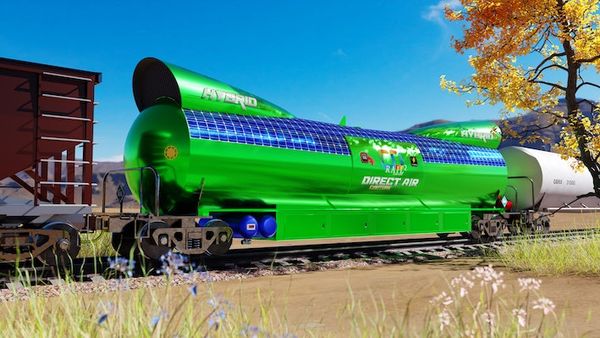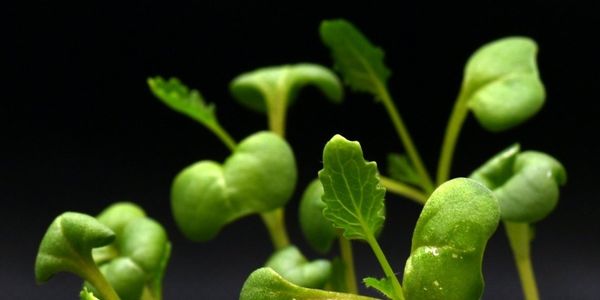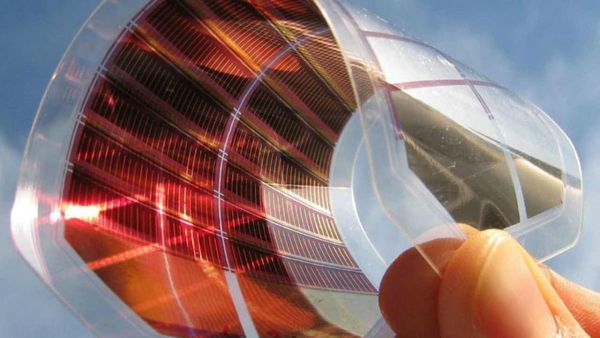In 10 seconds? Scientists have developed a new kind of solar panel that has achieved 9% efficiency in converting water into hydrogen and oxygen. This development is a major leap in technology as it is nearly 10 times more efficient than other solar-water splitting experiments to date!
Ok, but what exactly does this mean? Scientists have long been trying to mimic a crucial step in photosynthesis that converts water into hydrogen and oxygen. This new development has achieved just that at a rate that is parallel to that achieved by plants in a natural environment. Why is this important? Well, artificial photosynthesis can help us on the road to carbon neutrality by enabling us to produce hydrogen for fuel without the carbon emissions that are currently produced by obtaining hydrogen from fossil fuels.
Great but what do we use hydrogen for? Hydrogen is used as a fuel source in many industrial sectors which include chemicals, textiles, glass, and electronics. It is also increasingly being used in fuel cells as a source of clean energy for electricity production in electric vehicles for example, or in remote areas that are not connected to a power grid. Over the last few years, hydrogen technology has rapidly developed to help meet growing energy needs and as a result, many countries have set a domestic hydrogen roadmap.
Wow, so a lot! How was this new development achieved? The team achieved this by making two major advances over current technologies; the first is the ability to handle high light intensities without destroying the semiconductor that harnesses the light. This was achieved by reducing the semiconductor by more than 100 times compared to the existing semiconductors that work only at low light intensities. The second advancement also focuses on the semiconductor but this time focuses on the catalyst used to increase the efficiency of the reaction. Usually, the catalysts begin to degrade with more use but, in this new development, the semiconductor catalyst actually improves with use. Together, this enables the semiconductor to not only handle high light intensities but also enables it to operate at high temperatures which speeds up the water-splitting process and encourages the oxygen and hydrogen to remain separate instead of recombining to form water, helping the team to increase hydrogen production.

So, what’s next? Not satisfied with the current result, the team intends to further improve the efficiency of the reactions to achieve ultrahigh purity hydrogen that can be used to directly feed fuel cells. This would remove the extra steps that are currently needed to purify the hydrogen produced using these techniques. The hydrogen produced by current techniques can contain several impurities that significantly impact fuel cells' efficiency and lifespan. This could help to lower the cost of hydrogen production which is necessary if it is to replace conventional energy production using fossil fuels. While significant advances have already lowered the cost of producing hydrogen using green technologies, it is still not competitive enough to replace fossil fuels.
How quickly could we see hydrogen replacing fossil fuels? Green hydrogen, which is hydrogen produced from renewable sources, is touted as the energy of the future as the world tries to progress toward its target of heating net zero emissions. Doing away with the use of fossil fuels and carbon-intensive energy production is important if we are to meet our goals on climate change. However, it’s currently expensive and needs government support to compete with fossil fuel use. For example, the US is currently offering large incentives for hydrogen production under President Joe Biden’s $430 billion Inflation Reduction Act. Advances like the ones discussed here though could make the dream of a green hydrogen future more affordable and drive a quicker transition to a world powered by green energy.
You may not know this, but hydrogen can be produced in many ways …
… but green hydrogen is the only type produced in a climate-neutral manner.
Grey hydrogen, produced using natural gas, is the most common type of hydrogen used. It costs around $1 - $2 per kilo whereas green hydrogen costs $4 - $6 depending on where it is produced.
Blue hydrogen has a lower carbon footprint - it is also produced from natural gas but the CO2 generated during production is captured and permanently stored.
Green hydrogen - provided it can made in a cost-efficient way - could be used to supply most of our energy in the future and power our cars. Research is even examining the use of green hydrogen for powering the aviation industry.
Lindy has distilled 10 research papers saving you 35 hours of reading time.

The Science Integrity Check of this 3-min Science Digest was performed by Dr. ASM Mainul Hasan.






